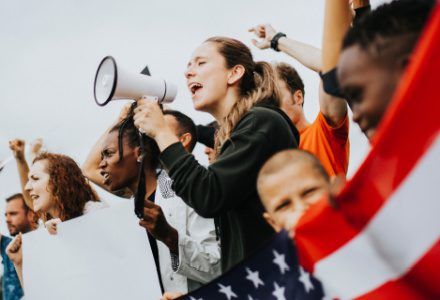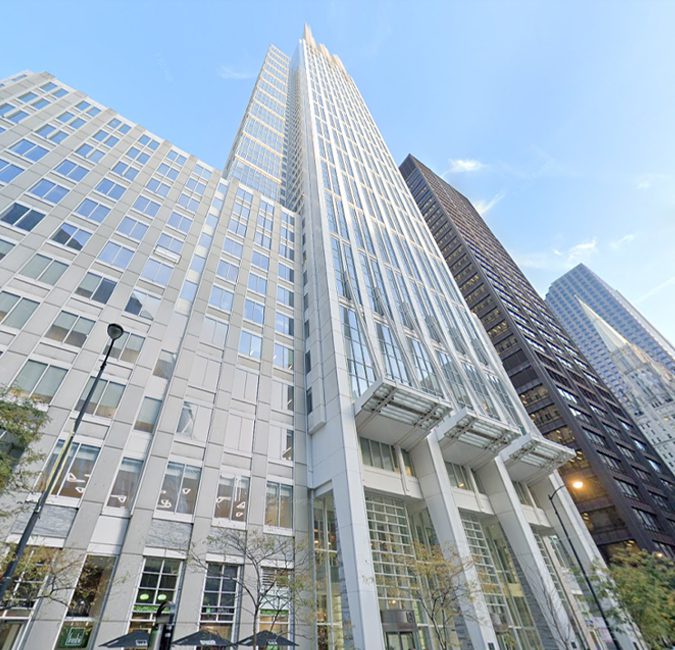DEI Programs Can Create A Hostile Work Environment
The United States Appellate Court for the Second Circuit recently held that the mandatory DEI programs implemented by the New York City Department of Education (“Education Department”) could have created a racially discriminatory hostile work environment. In Chislett v. New York City Department of Education, the Second Circuit held that the plaintiff (Ms. Chislett) had presented facts from which a reasonable jury could conclude that the mandatory diversity, equity and inclusion programs (“DEI”) she was required to attend created a racially discriminatory hostile work environment. The DEI programs that were challenged in the Chislett case contained some discriminatory content directed against the white employees that were required to attend the programs. Further, the impact of these programs was not limited to the DEI programs. The messages presented in these DEI programs spilled into the actual workspace.
An interesting aspect of this case is that Ms. Chislett did not base her claim on the labor and employment laws. Instead, her hostile work environment claim was brought under a federal law (Section 1983) that allows individuals to sue state employees and certain state entities who violate the United States Constitution. Ms. Chislett’s claimed that the defendants’ actions constituted racial discrimination that violated the Equal Protection Clause of the 14th Amendment to the United States Constitution.
Ms. Chislett is an educator who worked within the Education Department and led an initiative called “AP for All” that was designed to “increase participation in Advanced Placement courses by students in ‘underserved communities.’” In an effort to increase diversity in the Education Department, the Education Department’s Chancellor implemented mandatory “implicit bias training” programs for Education Department employees, which are also know as DEI programs. Instead of creating racial harmony within the workplace, the DEI programs “exacerbated the already racially-charged workplace.” In the very first DEI program, participants were told “while colleagues must take a step back and yield to colleagues of color” and “recognize that values of [w]hite culture are supremacist.” Later, participants were told that: “traits of ‘internalized white superiority,’ [include] ‘individualism;’ ‘denial;’ ‘dominating space;’ and ‘intellectualization.’” At a later DEI program, participants were told that “white culture’s values” are “homogeneous and supremacist” and that the “Protestant work ethic” and the “devotion to the written word” were examples of “white supremacy.” At one point, Ms. Chislett was told that “her ‘interest in excellence was perfectionism and consistent with white supremacy.’”
The DEI programs became more openly discriminatory against white employees as they progressed. In a later program, a Senior Executive Director stated that “[t]here is white toxicity in the air, and we all breathe it in.” The participants then had to “grade [themselves] on a scale of 0 to 130 ‘according to [their] white privilege like being able to buy products for [their] hair type at a typical drug store’ and were physically ‘lined up to reveal the dividing color line of privilege that favored whites.’” In a different session, the participants were broken into small groups and were asked to “list white values on a poster.” When Ms. Chislett said she was uncomfortable doing this, “another participant told Chislett that she was a ‘horrible person’ who ‘did not deserve to be working with children in New York City.’” Ms. Chislett was then singled out by one of the program’s facilitators who told the other participants, in Ms. Chislett’s presence, that “if they did not stand up to ‘people like [Chislett] who disagree with these views about white supremacist values, children’s lives would be at stake.’”
The discriminatory views expressed in the DEI programs later started to appear outside of the DEI programs and into the actual workspace.
According to the leadership at the Education Department “OEA employees were expected to have racial conversations in group setting approximately once a month.” At one of these meetings, rules were presented explaining that “whites who wanted to withdraw or not participate in order to be safe were demonstrating white fragility, and it was no longer [the] right [of white people] to be safe in the workplace.”
In a later DEI program, the facilitator told the participants that they were going to have to discuss their “power and privilege,” and that: “You are going to have to name that you have privilege. And then I’m going to ask you, while naming your privilege that you may have to step back from some things, and that’s not going to feel good. And you’re probably going to question your job security.”
The messages in the DEI program were verbalized by other employees to Ms. Chislett. The New York Post published an article concerning the DEI problems at the Education Department. At a staff retreat, a discussion concerning the article devolved into 15 minutes of a supervisor and co-workers verbally attacking Ms. Chislett.
During this time period, Ms. Chislett was stripped of her supervisory responsibilities and was effectively demoted. After the last staff retreat in which she was verbally harassed for about 15 minutes, Ms. Chislett resigned. Her lawsuit followed.
To show a hostile work environment, a plaintiff must prove that the conduct was “sufficiently severe or pervasive to alter the conditions of the victim’s employment and crate an abusive working environment.” This typically requires a “series of incidents” that were “sufficiently continuous and concerted to have altered the conditions” of the working environment. It is possible, however, that a single incident that is “extraordinarily severe” can create a hostile work environment.
The lower court dismissed the case on what is called a summary judgment motion. A summary judgment motion evaluates whether the plaintiff has identified material facts that are either disputed, or that a rational jury could find that the defendant is liable for the alleged wrongs. The district court held that no rational jury could find the defendants liable for creating a hostile work environment based on the facts presented by Ms. Chislett. The Second Circuit Court of Appeals reversed this holding and sent the case back to the district court for a trial on the hostile work environment claim.
The Second Circuit Court of Appeals held that from the facts Ms. Chislett presented “a rational jury could find that racist comments were expressed during the bias trainings.” The court pointed out that [n]egative generalizations and stereotypes about white people were also targeted specifically at Ms. Chislett during the trainings. The court dismissed the defendants’ arguments that the comments were acceptable as part of an effort to root out racism: “The fact that the purpose of the sessions was to combat race discrimination does not excuse the alleged presence of race discrimination in the conduct of the sessions.”
The court also pointed out that the racist comments made in front of Ms. Chislett and directed at her were not limited to the DEI programs. The court stated that “a rational juror could find that there was a consistent ‘pattern’ wherein Chislett ‘could expect [racist] remarks and other harassment at any time.’” The court concluded one part of the analysis by stating that the “presence of such racialized conflicts and the frequent accusations that Chislett was operating out of white privilege and supremacy for performing ordinary supervisory responsibilities further support her hostile work environment claim.”
Evidence also showed that discriminatory comments were not limited to Ms. Chrislett. At one of the DEI programs, an employee of partially white parentage was also the subject of discriminatory comments. The court pointed out that discriminatory “conduct not directly targeted at or spoken to an individual but purposefully taking place in [her] presence can nevertheless transform [her] work environment into a hostile or abuse one.”
Another aspect of the case was that Ms. Chislett brought a constitutional claim against her employer who is also a municipal entity. Private employers are not directly liable under the Constitution, but municipal employers are subject to the equal protection clause contained in the Fourteenth Amendment. There are some significant limitations placed on an individual’s right to sue a municipality for violating the Constitution. For example, a municipal employer is not strictly liable for the actions of its employees. Instead, the municipal employer is only liable if the discrimination was a “policy or custom” and was the “moving force of the constitutional violation.” This does not mean that the plaintiff has to show a written policy directing discriminatory actions. Instead, a plaintiff can show a custom or practice from the actions taken by the entity’s employees: “It suffices to establish that discriminatory practices were ‘persistent and widespread’ so as ‘to constitute a custom or usage with the force of law’ and that a discriminatory practice of subordinates was ‘so manifest as to imply the constructive acquiescence of senior policy making officials.’” Inaction by superiors in the face of widespread and persistent discrimination can constitute acquiescence by the municipal entity.
Evidence presented by Ms. Chislett showed that supervisory personnel at the Education Department played a role in the development and implementation of the DEI programs. Further, Ms. Chislett complained to her superiors about the racial discrimination at these DEI programs and when she performed her supervisory duties. Those supervisors did not take action to prevent or stop further discrimination. The court held that there was sufficient evidence in the record to allow a jury to infer that Ms. Chislett’s supervisors were aware of the discrimination and that those complaints were passed along to their superiors.
The court pointed out that DEI programs are not necessarily discriminatory. What is critical is how the DEI programs are conducted. The court succinctly stated that “[w]hen employment trainings discuss any race ‘with a constant drumbeat of essentialist, deterministic, and negative language [about a particular race], they risk liability under federal law.”
While some employers have determined that DEI programs are important, those programs cannot address the problem or racism by engaging in overt racism against a group of employees based on the color of their skin. Certain individuals disagree with this and claim the only way to combat white racism is through racism against whites. The Constitution does not allow municipalities to indulge such theories. Municipalities that do engage in such prohibited conduct may find themselves facing lawsuits brought under Section 1983.
Previous Post
Free Speech in the Workplace: What Are Your Rights?
Free speech is one of our most cherished rights, protected by the First Amendment of the U.S. Constitution. It enables individuals to freely express...
NEXT Post
When Is Someone Too Dangerous To Have a Firearm (The Slippery Slope and The Second Amendment)
A constitutional right means little if government officials have the discretion to suspend or ignore that right. Constitutional rights limit what government officials can...







